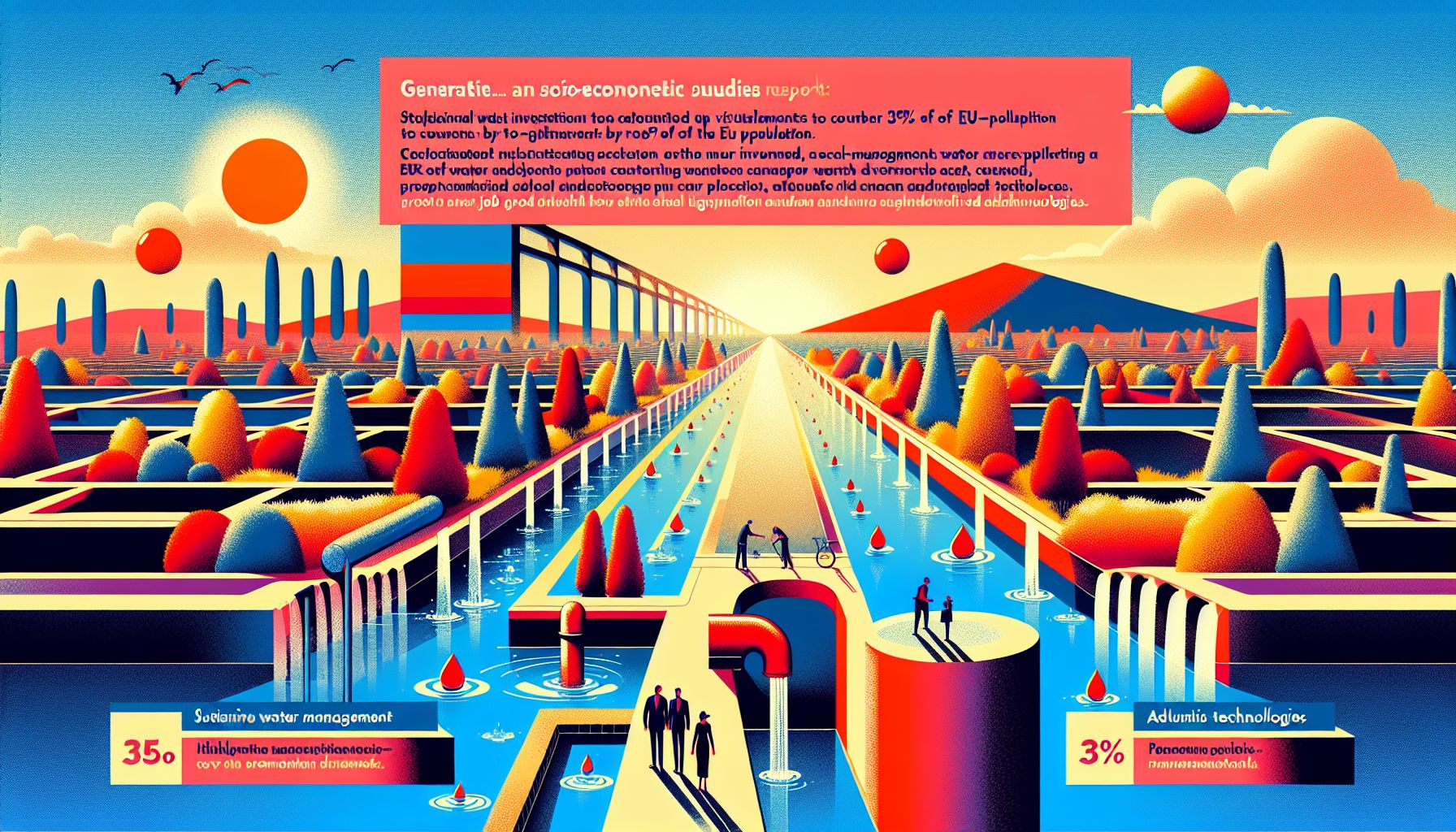EU Study: €255 Billion Water Investment Crucial for Economic and Environmental Resilience

Nieuwegein, Thursday, 24 October 2024.
Water Europe’s socio-economic study calls for substantial water investments by 2030 to address growing scarcity affecting 38% of the EU population. The report emphasizes the need for sustainable water management to support key industries projected to grow nearly fivefold, potentially creating 13,000 jobs and saving €3 billion annually through advanced technologies.
A Strategic Vision for Water Sustainability
The European PathoCERT project, concluded in February 2024, has been pivotal in enhancing the capabilities of emergency services across Europe to tackle waterborne pathogen incidents. As a part of the Horizon 2020 research program, PathoCERT introduces new technologies that enable utilities and emergency services to mitigate public health risks associated with contaminated water swiftly and efficiently. This innovation is particularly critical as it directly addresses the increasing threat of waterborne diseases, which can have severe health and economic repercussions.
Technological Innovations Driving Change
PathoCERT, led by the KWR Water Research Institute in collaboration with EURECAT and the KIOS Research Institute from the University of Cyprus, has developed cutting-edge tools such as PathoTHREAT and PathoINVEST. These tools significantly improve situational awareness and response times during contamination events. PathoTHREAT provides emergency responders with rapid access to pathogen-specific information, enabling quick decision-making during crises. Meanwhile, PathoINVEST simulates pathogen contamination events, predicting the spread and assessing health risks in real-time, which is crucial for effective crisis management.
Real-World Applications and Impact
In practical applications, PathoCERT tools have demonstrated substantial improvements in managing waterborne pathogen incidents. During pilot tests in the Netherlands, Cyprus, and Spain, these technologies reduced response times and enhanced the accuracy of contamination assessments. For instance, in the Netherlands, the PathoINVEST tool identified a contamination source within 1.5 hours following customer complaints, showcasing its potential to transform emergency response protocols. The success of these tools has prompted authorities to consider integrating them into standard operating procedures, marking a significant step forward in water safety management.
Future Prospects and Continued Development
Though PathoCERT has already made significant strides in improving emergency responses, further development and validation are essential for broader deployment. The technologies are expected to see future market opportunities as they prove their efficacy in real-world scenarios. As Europe faces ongoing challenges with waterborne pathogens, the need for such innovative solutions is more pressing than ever. Authorities and stakeholders are encouraged to continue investing in these technologies, paving the way for safer and more resilient water systems across the continent.

